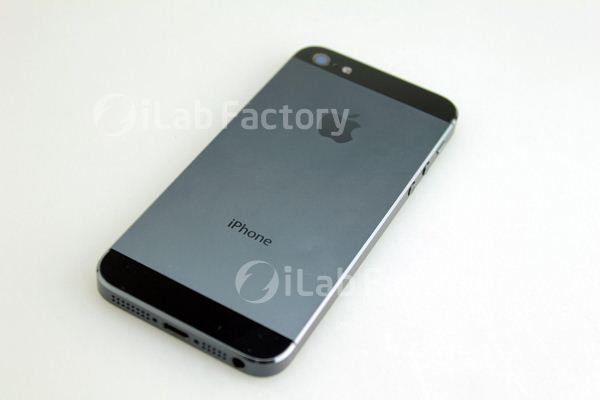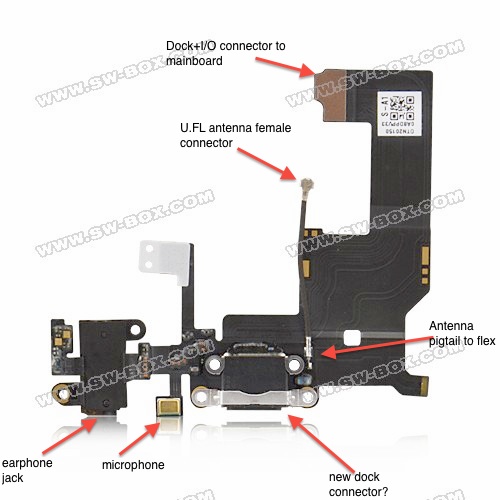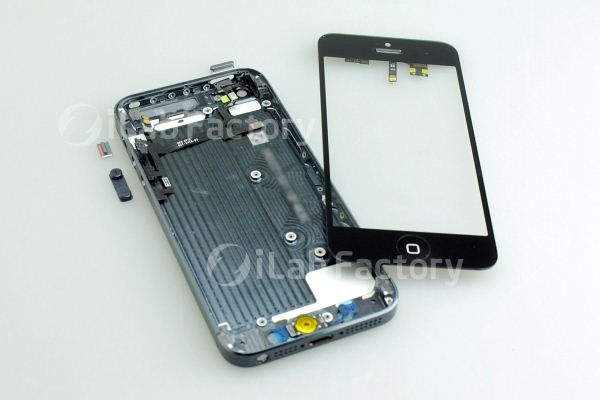Preparing for the iPhone Next: Rumors Analyzed
by Brian Klug & Anand Lal Shimpi on August 27, 2012 9:40 PM EST- Posted in
- Smartphones
- Apple
- Mobile
- iPhone
While we typically don't comment on rumors we don't know to be true at AnandTech, we often get requests to help set rational expectations ahead of major iDevice launches. The shroud of secrecy around major Apple launches can pave the way for both sensible and unrealistic conclusions.
Given the growth of Apple's iPhone/iPad devices, it has become increasingly difficult for suppliers in the chain to remain mum about any changes. Similar to how we often get early access to CPUs, motherboards and other components out of Taiwan, it has become increasingly commonplace to see leaks of iDevice components out of the big ODMs in China.
Apple is largely expected to launch its sixth iPhone next month. The historical cadence of design, SoC, and cellular changes are in the table below:
| Apple iPhone - Historical Trends | |||||||
| Release Year | Industrial Design | CPU Architecture | GPU Architecture | Cellular Architecture | |||
| iPhone | 2007 | 1st gen | ARM11 | MBX-lite | Infineon S-Gold 2 | ||
| iPhone 3G | 2008 | 2nd gen | ARM11 | MBX-lite | Infineon X-Gold 608 | ||
| iPhone 3GS | 2009 | 2nd gen | Cortex A8 | SGX-535 | Infineon X-Gold 608 | ||
| iPhone 4 | 2010 | 3rd gen | Cortex A8 | SGX-535 | Infineon X-Gold 618 in 4 GSM / Qualcomm MDM6600 in 4 CDMA | ||
| iPhone 4S | 2011 | 3rd gen | 2 x Cortex A9 | SGX-543MP2 | Qualcomm MDM6610 (MDM6600 w/ ext. trans) | ||
| iPhone Next | 2012 | ? | ? | ? | ? | ||
Trends are pretty easy to spot in the table. With the exception of the first iPhone, the industrial design appears to be on a 2-year cadence. The CPU and GPU architectures are also on the same 2-year cadence. From a silicon standpoint even the cellular architecture is trending towards the same 2-year cadence, with a few notable exceptions (e.g. GSM/CDMA iPhone 4 divide).
Based on historical trends alone it's pretty easy to conclude that we'll see a 4th generation chassis, a pair of ARM Cortex A9s and a PowerVR SGX 543MP2 under the hood. Add the assumption of LTE (a reasonable one to make) and you have a pretty believable story. It turns out the currently available evidence helps corroborate this, but let's dig through what's out there to see how this all fits.
Chassis & Display
The chassis is largely a known quantity by this point. Enough examples out of China have surfaced to support the current working theory of a 4-inch diagonal (16:9) display in a slightly taller chassis with roughly the same width. Put simply, it's a new taller aspect ratio, which also has the consequence of including a larger 4-inch, 640 x 1136 display. The result is a change only in one dimension for developers to worry about.
The other big rumored change is a move from on-cell touch sensing (which places the drive and detect ITO layers above the LCD assembly) to an in-cell touch solution. In-cell being the operative word because the drive layers are integrated into the LCD gating (or use it natively), or on the color filter layer. There's some debate about what counts as on-cell and in-cell that isn't quite settled, but ultimately what it boils down to is a thinner display stack that will contribute significantly to the reduction in overall device thickness that is rumored for the upcoming iPhone.
While the industrial design remains quite similar at a high level, there do appear to be some major changes. Where the 4 and 4S designs used front and back glass with an external metal band for support, the leaked designs out of China feature a metal unibody construction with cutouts for RF windows at top and bottom. There's enough evidence of this from the CNC machine marks visible on examples, and moreover moving to a larger form factor requires a beefier chassis.

Black regions at top and bottom are likely RF window cutouts
With top and bottom RF windows (which appear to be glass) there shouldn't be any implications on antenna performance for cellular. If you followed our coverage of the evolution of Apple's cellular antenna design from the iPhone 4 GSM, to 4 CDMA, to 4S, you'll notice that this is a clear next step, largely inheriting the top/bottom antenna split from the 4S which fully mitigated deathgrip. Interestingly enough the exterior band appears to have a different chrome finish rather than the matte stainless steel of previous designs.

Bottom flex cable, annotations ours
Other things like moving the 3.5mm headphone jack to the bottom of the device and the mini 9-pin dock connector are fairly well corroborated by leaks with components that all fit together inside the case. Interestingly enough, parts indicating the mini dock connector and relocated headphone jack have been circulating for nearly 4 months.











131 Comments
View All Comments
KoolAidMan1 - Tuesday, August 28, 2012 - link
Unless you're a Linux using neckbeard (and I'd bet money that you aren't), then your entire post is trash.And if you are a Linux using neckbeard, sucks to be you
Focher - Tuesday, August 28, 2012 - link
Funny that each generation of iPhone is just an upgrade to all the previous generation iPhone owners. Of course, we wouldn't want math to get in the way of that assertion so let's just assume every iPhone owner will buy at least two of the next version. Some even more!Also interesting is your claim that the article is based on conjecture after two whole paragraphs of exactly that which you disdain. By the way, I would suggest you look up that word in a dictionary. Because an article that analyzes leaked pictures of the hardware and then makes predictions based on those items doesn't at all fit the definition of that word.
inplainview - Wednesday, August 29, 2012 - link
Obviously someone has given you the impression that your purchasing decisions matter to the masses. No one really cares what you will and will not buy.Super56K - Friday, August 31, 2012 - link
I love these posts. It gives the vibe of someone standing on a street corner holding a 'THE WORLD IS ENDING' sign; giving the same spiel, over and over, to anyone who makes eye contact.solipsism - Tuesday, August 28, 2012 - link
If by tweak, you mean completely redesigned, then yeah.ramnam - Monday, August 27, 2012 - link
Would using a backplate made of the liquidmetal stuff mitigate concerns about it acting as a ground for the NFC field ? I understand Apple licensed the technology a while backjrswizzle - Tuesday, August 28, 2012 - link
This is an on-again, off-again rumor I hope comes to pass. Though the head of the company who produces the liquid metal said it would be years before they'd be able to produce the stuff on the mass scale needed for a device like the iPhone to be made of it.swb311 - Tuesday, August 28, 2012 - link
Several years away unfortunatelyjwcalla - Monday, August 27, 2012 - link
If true it's a rather conservative update at a time when the competition is getting pretty fierce. You can't be too risk-averse in this business.jjj - Monday, August 27, 2012 - link
there is a bigger screen there so battery life might not be any better.as for the SoC,they mgiht go for dual A9 (they certainly won't go quad) but that's so far behind the top phones that they really should do more.
The iPhone is the new dumbphone but still quad Krait vs dual A9, is just lol.